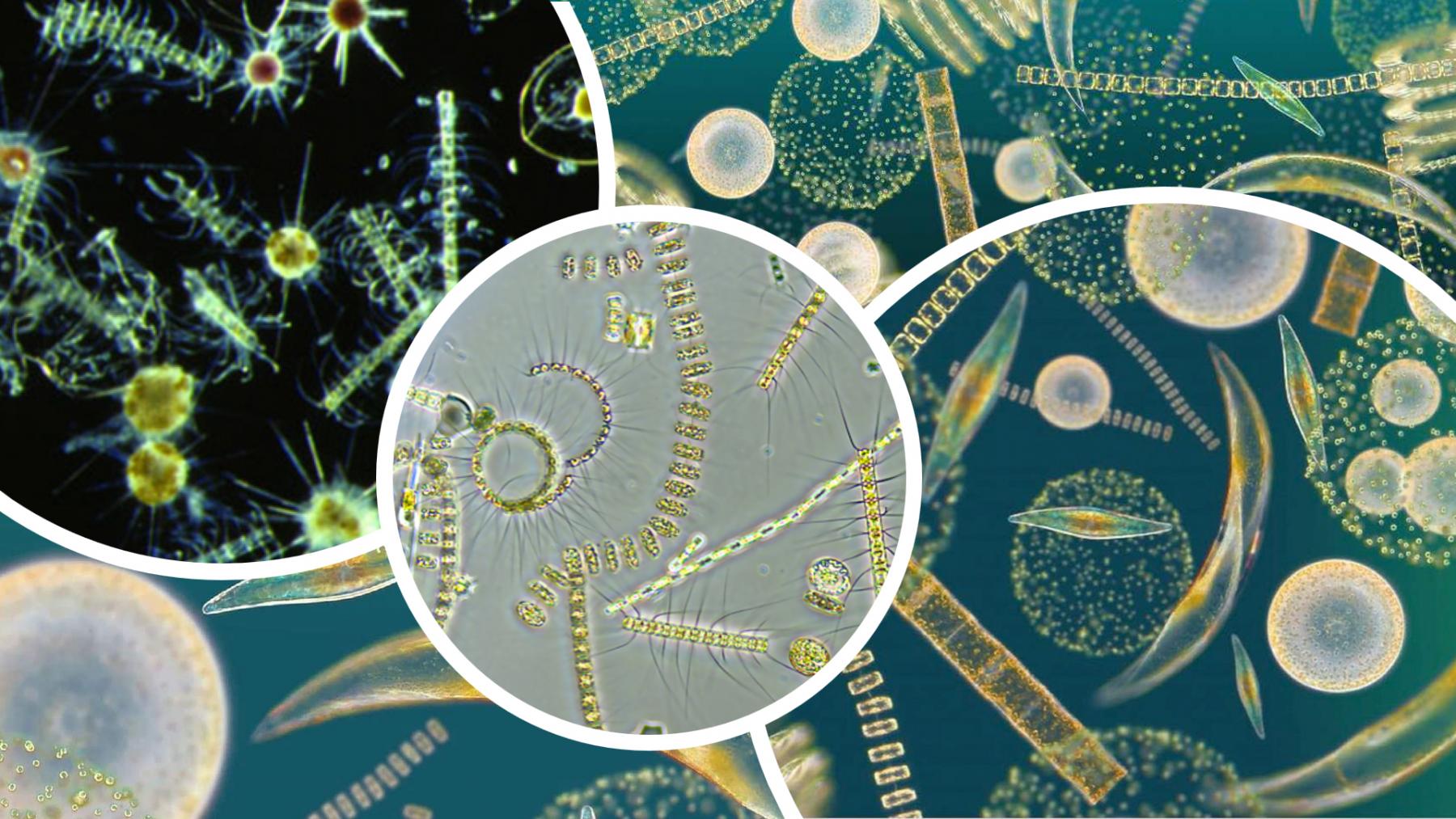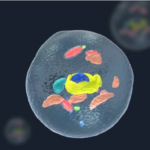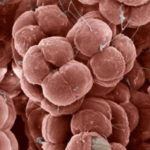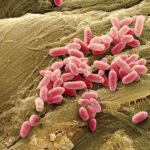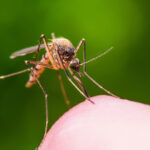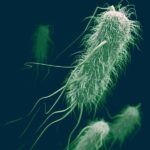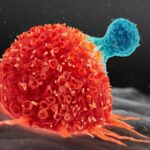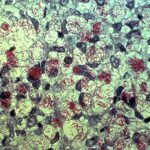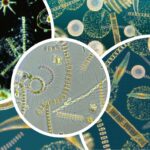Phytoplankton is the general term for small plant organisms living in water. These organisms produce energy through photosynthesis and move within the water from the surface or from subsurface layers. Phytoplankton is one of the primary producer organisms in the water and is a fundamental component of many aquatic ecosystems. It can be found in oceans, lakes, rivers, and other water sources.
Phytoplankton includes various plant organisms with different characteristics. These organisms are generally microscopic and too small to be seen with the naked eye. Similar to other plants, they have cell structures containing nuclei. While some phytoplankton species are single-celled, others can form colonies.
Phytoplankton produces organic matter through photosynthesis. It obtains energy from sunlight and uses carbon dioxide and nutrients to produce sugars and oxygen. This process forms the basis of the energy cycle in aquatic ecosystems and provides an important source for the survival of other organisms. Different phytoplankton species can thrive in different conditions. Some are found in cold water regions while others prefer warmer waters. Additionally, some phytoplankton species may inhabit freshwater sources while others thrive in oceans. Physical and chemical factors such as water temperature, light levels, nutrient availability, and salinity can influence the growth and distribution of phytoplankton populations. Therefore, phytoplankton populations vary according to environmental conditions and are considered significant indicators of the health and balance of aquatic ecosystems.
Phytoplankton forms the foundation of the food chain in aquatic ecosystems. Other organisms utilize phytoplankton as a food source, thus directly impacting other organisms and potentially leading to an imbalance in the ecosystem. For instance, excessive phytoplankton growth can result in oxygen depletion in aquatic ecosystems, creating an unfavorable environment for other organisms’ survival.
In summary, phytoplankton are small plant organisms that play a vital role in aquatic ecosystems. They produce energy through photosynthesis and form the basis of the ecosystem’s food chain. Phytoplankton populations are sensitive to environmental conditions and can serve as important indicators for the health of aquatic ecosystems. Therefore, monitoring and preserving phytoplankton are crucial for the sustainability of water resources.
Definition of Phytoplankton: Phytoplankton refers to microscopic plants living in aquatic ecosystems. These organisms inhabit regions close to the water’s surface and produce energy through photosynthesis. Phytoplankton can be found in oceans, lakes, rivers, and other bodies of water. These plants oxygenate the water while simultaneously performing photosynthesis by absorbing carbon dioxide from the atmosphere.
The most common types of phytoplankton are algae. These plants have distinct pigments that determine their colors and enable them to perform photosynthesis by absorbing sunlight from the water’s surface. Phytoplankton are crucial for oxygenating water ecosystems and also serve as a source of organic matter, providing nutrition to other underwater organisms.
The absence or scarcity of phytoplankton can lead to significant imbalances in water ecosystems. Particularly in tropical seas, a decrease in phytoplankton levels can affect coral reefs. Furthermore, phytoplankton quantities influence the distribution and population of underwater organisms.
Phytoplankton plays a vital role in the food chain of ecosystems. By serving as a source of nutrition, they enable other organisms to obtain energy. Organisms that consume phytoplankton derive energy from these microscopic plants and acquire necessary nutrients to sustain life. Thus, the presence of phytoplankton forms the foundation of the food chain in water ecosystems.
Phytoplankton growth and diversity are influenced by factors such as water temperature, light levels, water movement, and nutrient salinity. Many phytoplankton species are organisms that float on the water’s surface and move according to water currents or wind.
It’s important to note that phytoplankton can be affected by climate change and human activities. Changes in seawater temperature and chemical composition can impact phytoplankton growth and distribution. For instance, excessive agricultural inputs can increase water nutrient levels, triggering phytoplankton blooms. This can lead to imbalances in aquatic ecosystems and deterioration in water quality.
Phytoplankton is considered a significant indicator of biological diversity and vitality in water ecosystems. Therefore, research on phytoplankton quantity and composition plays a crucial role in detecting early signs of ecosystem health and crisis situations.
In conclusion,
Phytoplankton is an indispensable part of aquatic ecosystems. They produce energy through photosynthesis, oxygenate water, and form the basis of the food chain. However, factors such as climate change and human activities can influence the quantity and distribution of phytoplankton. Therefore, monitoring and preserving phytoplankton are essential for the health of aquatic ecosystems.
Characteristics of Phytoplankton
- Diversity: Phytoplankton comprises a wide variety of organisms, including algae (single-celled or multicellular), cyanobacteria, and some protists. Each phytoplankton species has different characteristics and adaptations.
- Size: Phytoplankton are very small and classified as microscopic. While some phytoplankton are only a few micrometers in size, others can grow up to a millimeter. Their small size enables them to easily adapt to water currents and movements.
- Photosynthesis: Phytoplankton produce energy through photosynthesis. They synthesize organic compounds using sunlight, carbon dioxide, and water. During photosynthesis, a portion of the carbon is released back into the atmosphere as oxygen. This process is responsible for producing a significant portion of the oxygen in the Earth’s atmosphere.
- Distribution: Phytoplankton can be found in almost every marine and freshwater ecosystem. However, their distribution depends on various factors. Factors such as water temperature, nutrient levels, light intensity, and water movement affect the distribution of phytoplankton between regions and depths.
- Food Chain: Phytoplankton occupies the beginning of the food chain in ecosystems. Other organisms feed on these microscopic plants to obtain energy. Phytoplankton is the primary food source for zooplankton, which are then consumed by larger marine organisms, thus continuing the food chain.
- Economic Importance: Phytoplankton is of significant economic importance. It is a vital food source for the fishing industry. Additionally, some phytoplankton clean up organic matter accumulated in oceans while producing oxygen and absorbing carbon dioxide. This plays a crucial role in combating global climate change.
- Climate Impact: Phytoplankton can also affect climate. During their growth cycles, they absorb carbon from the atmosphere and convert it into oxygen, thereby reducing atmospheric carbon dioxide levels. Additionally, phytoplankton can reflect some of the heat present on the surface of the oceans, contributing to climate regulation.
- Color: Different species of phytoplankton can have different colors, depending on the pigments they contain. For example, the colors of blue-green algae are determined by chlorophyll a and phycocyanin pigments. The visual diversity of phytoplankton can affect their visibility and species composition on the water’s surface.
- Marine Biology: Phytoplankton is an important subject in marine biology. Studying these microscopic plants helps in understanding and conserving marine ecosystems. Furthermore, changes in phytoplankton populations can be indicators of environmental changes in the oceans.
- Water Quality: Phytoplankton can be used as an indicator of water quality. Some phytoplankton species are sensitive to factors such as eutrophication, pollution
